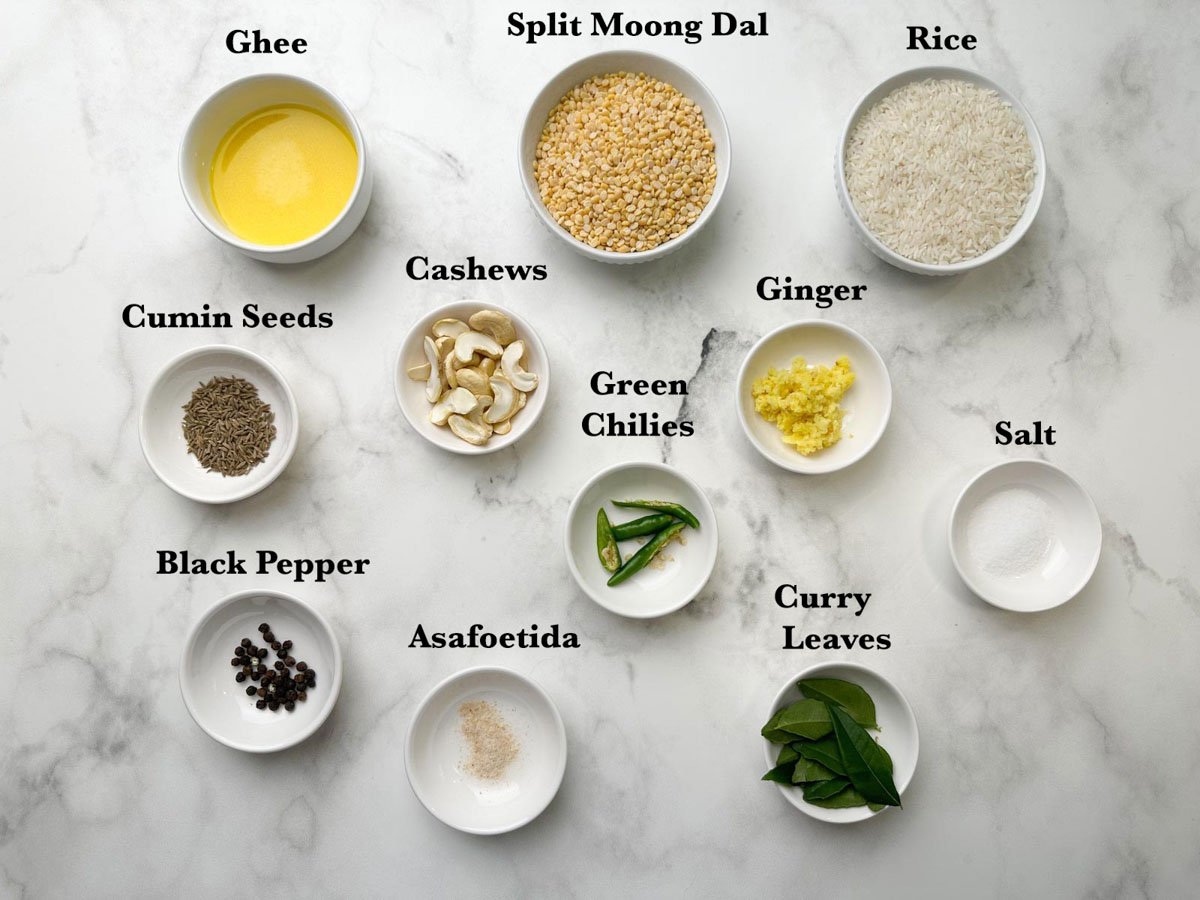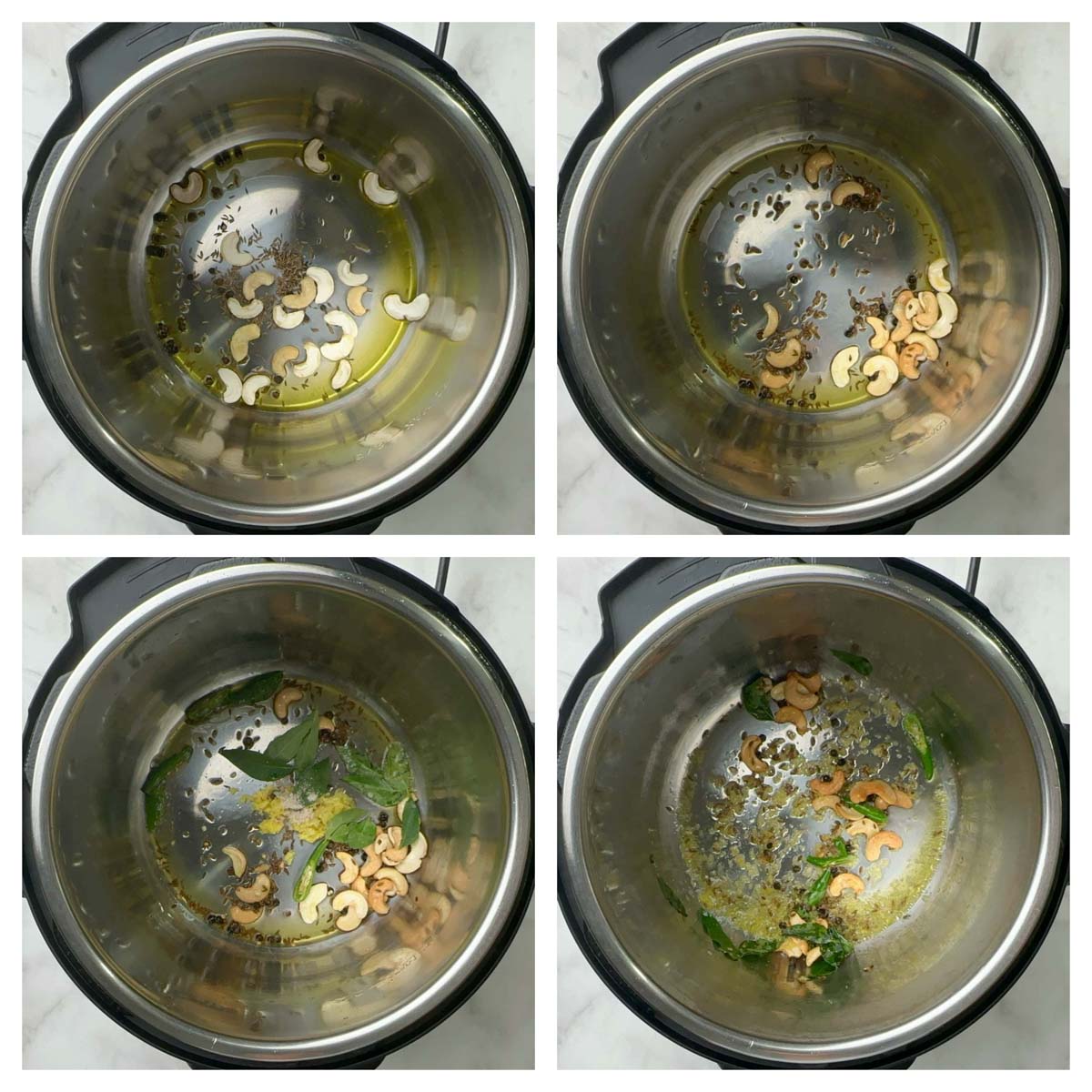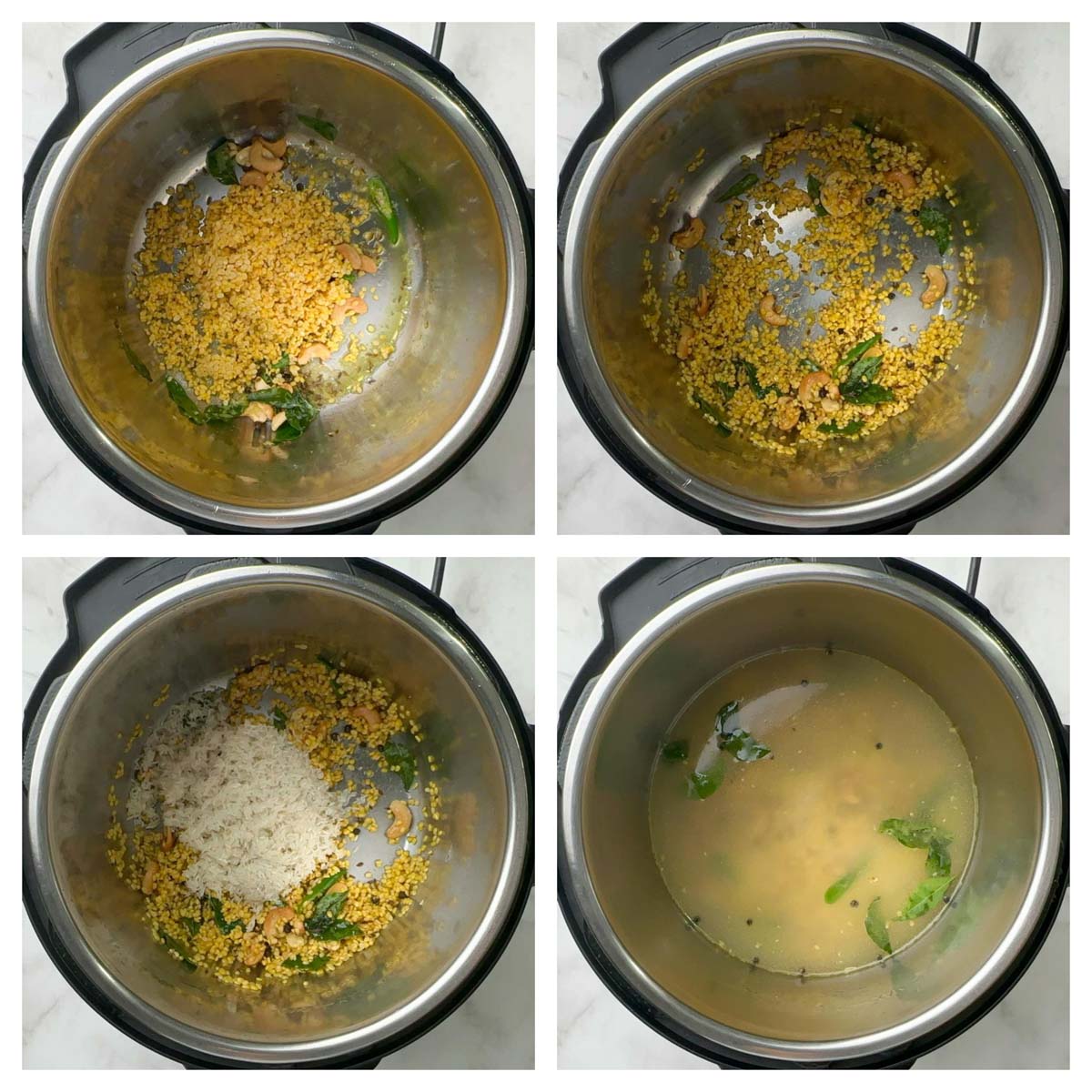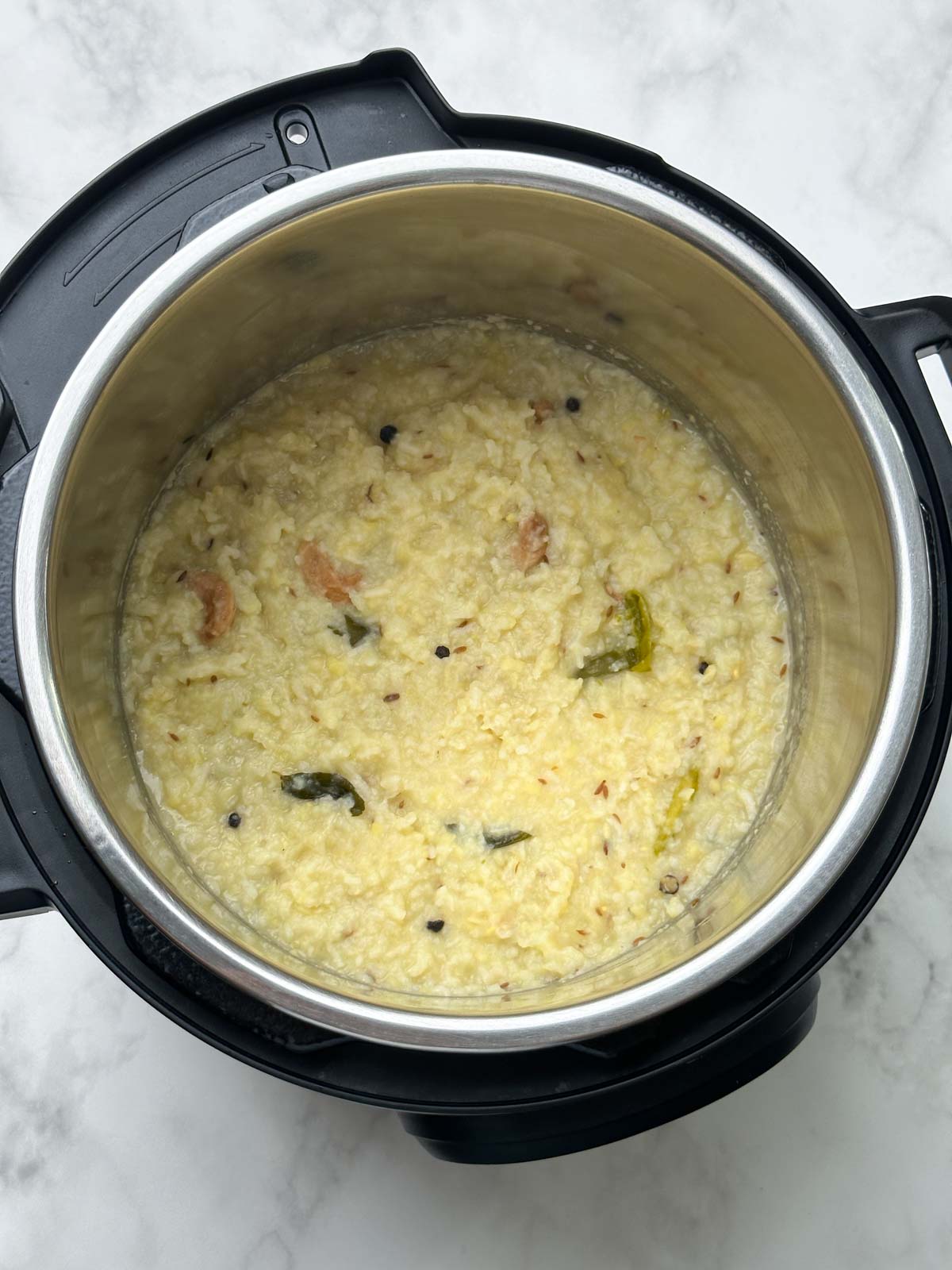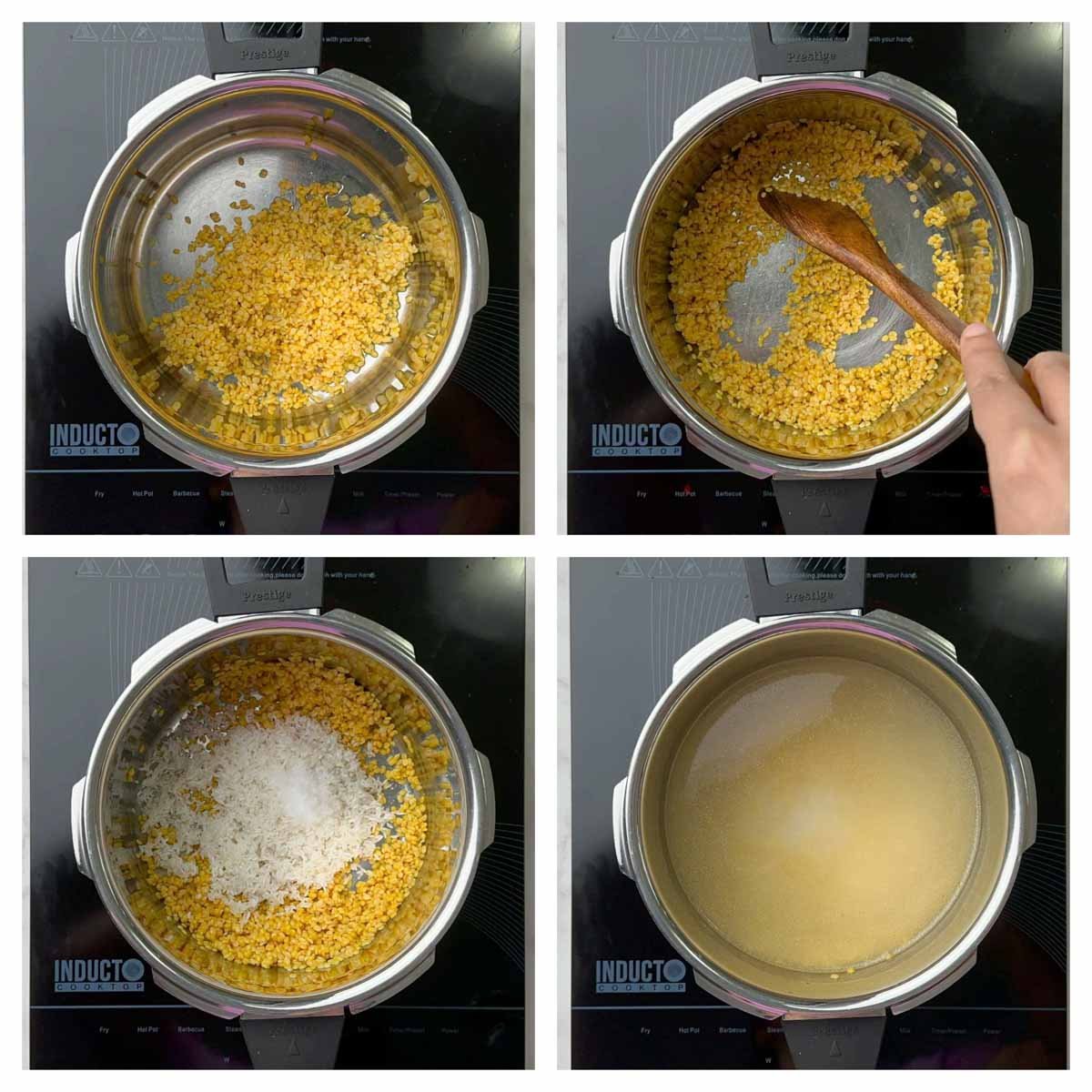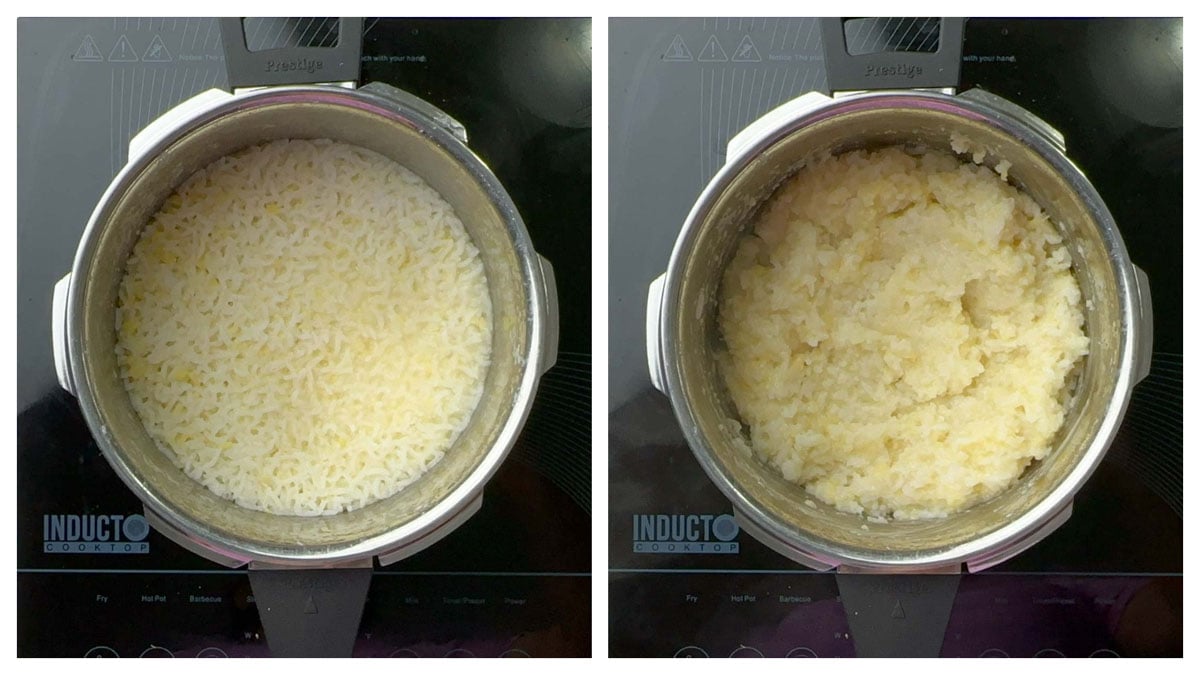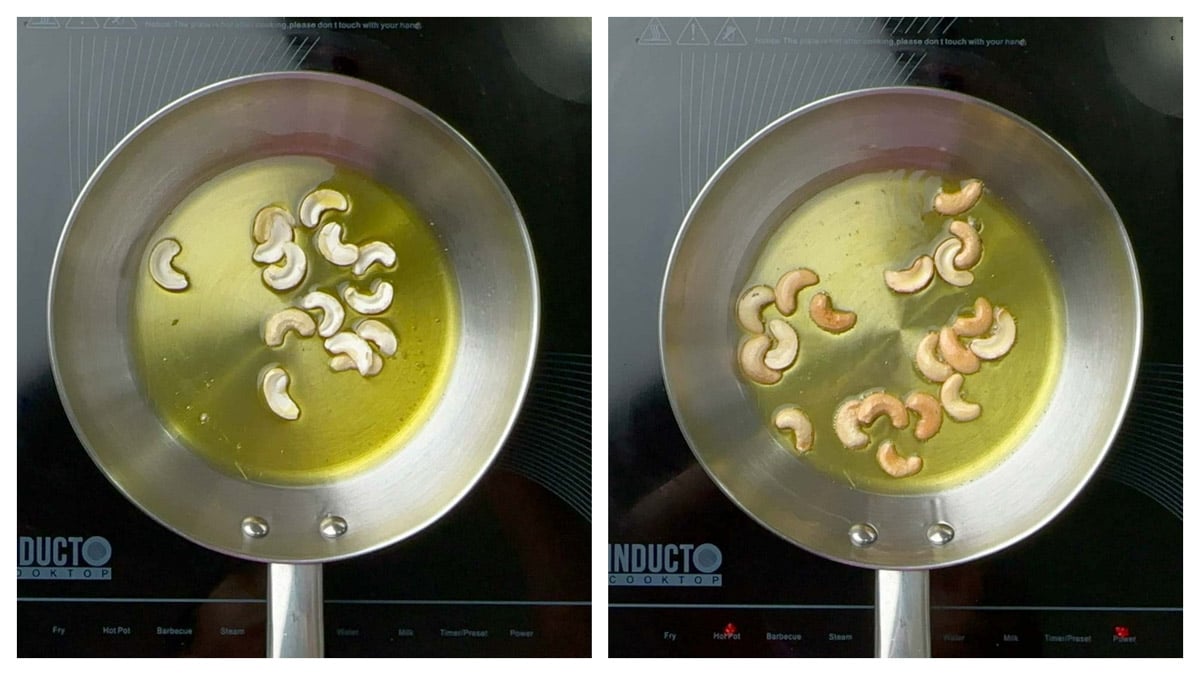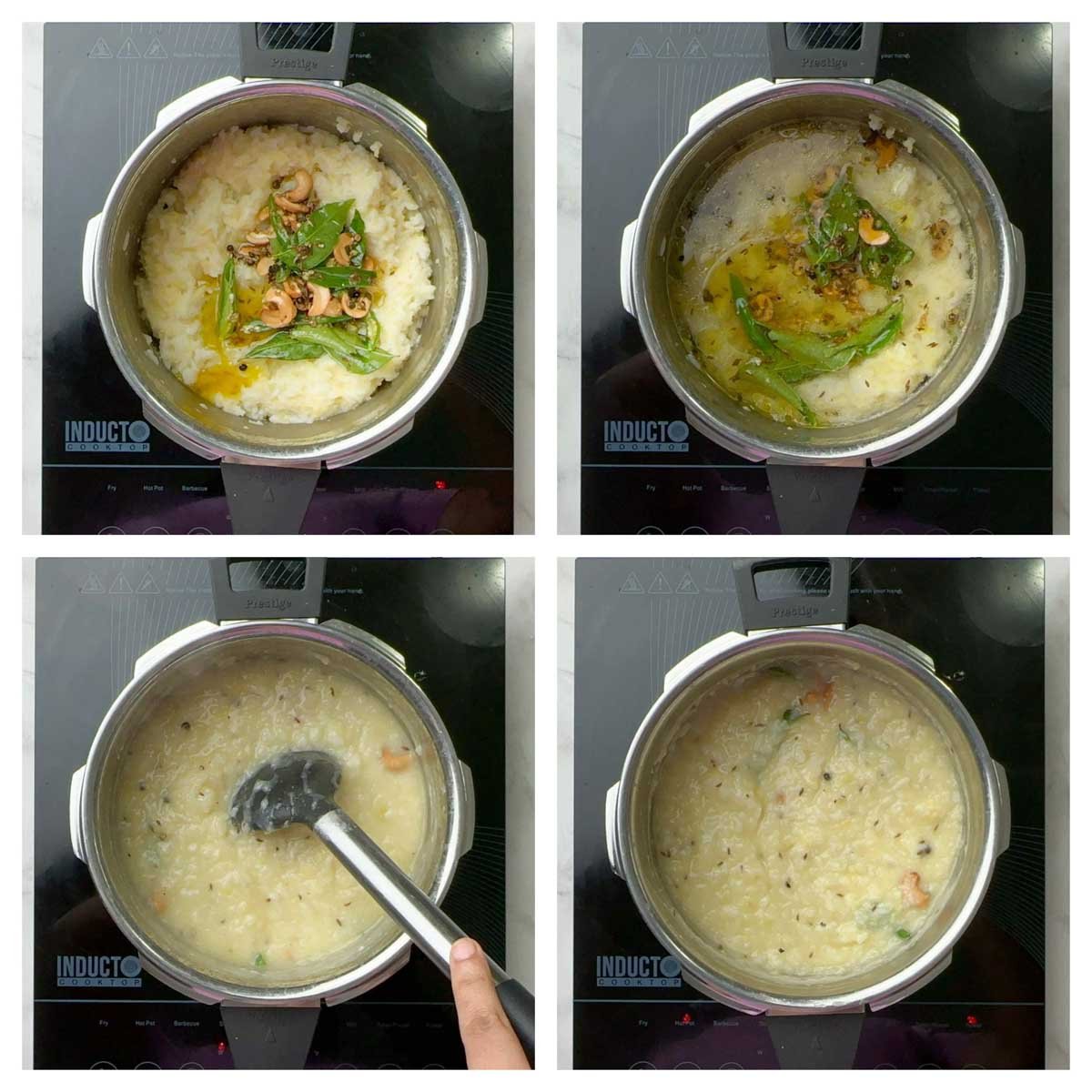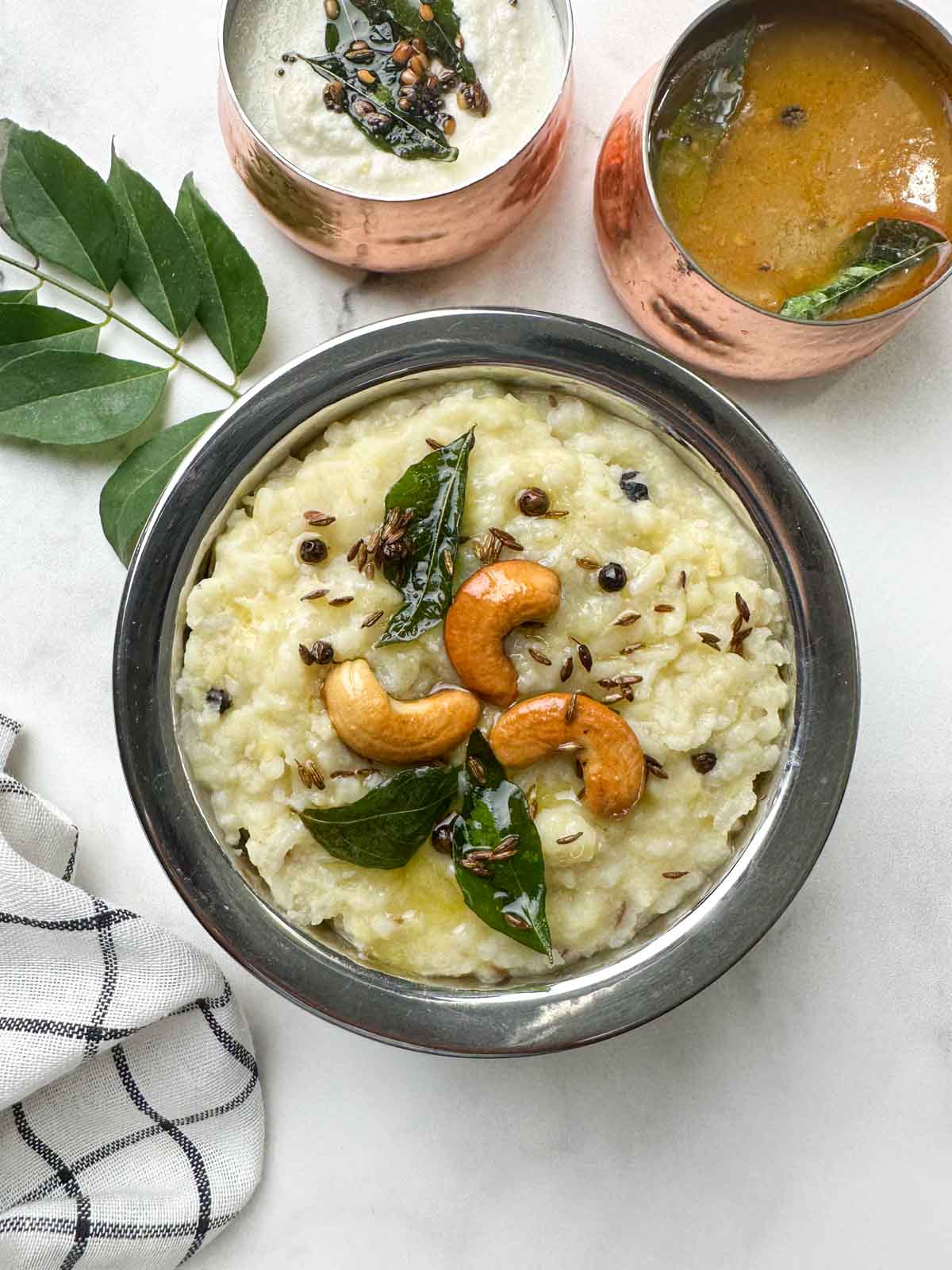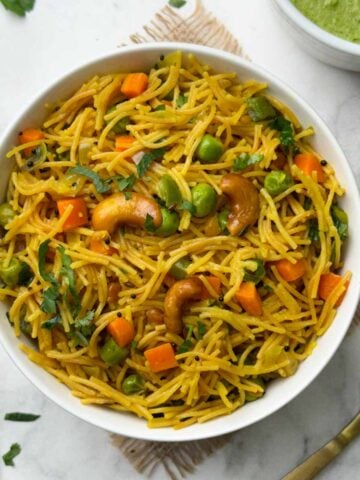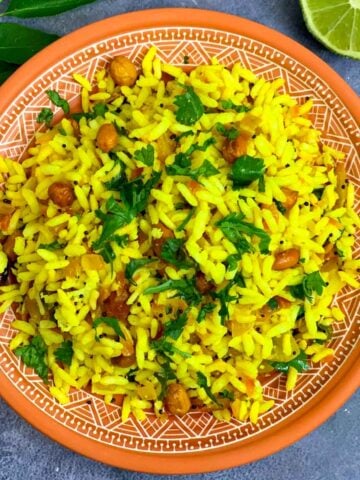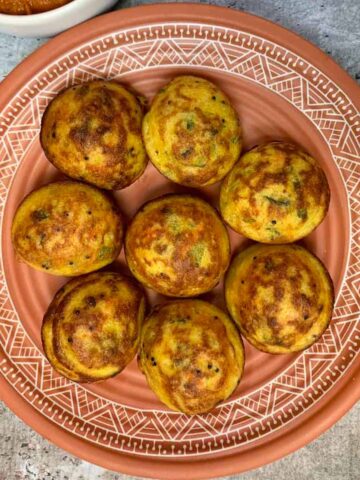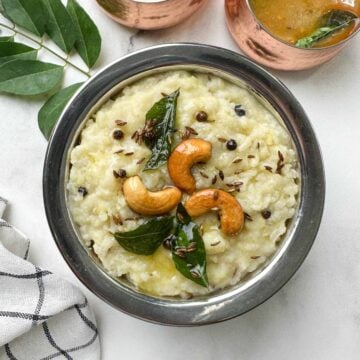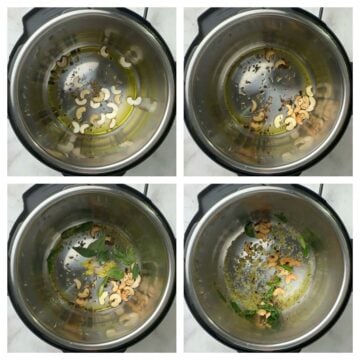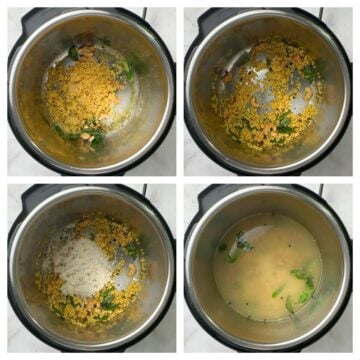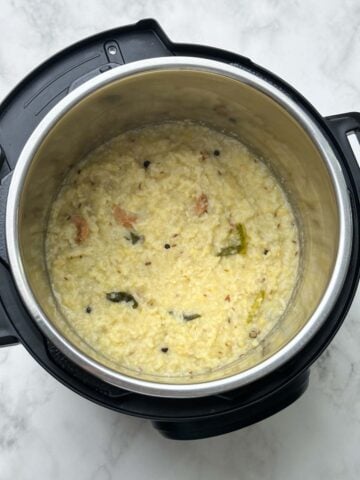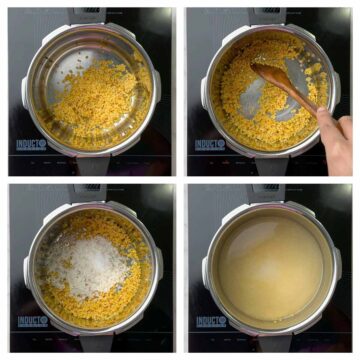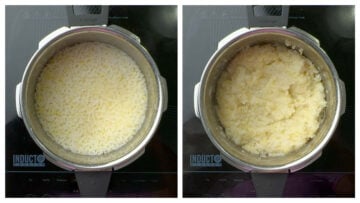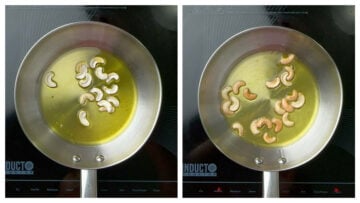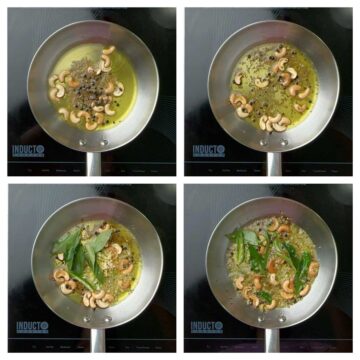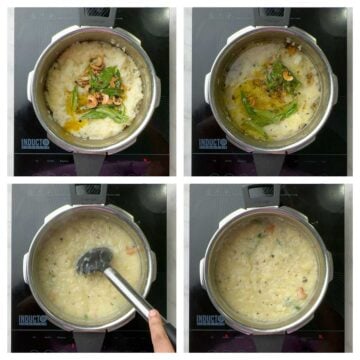Pongal is a hearty, spicy porridge-style dish that’s perfect for starting your day on a healthy note. It’s also a great festive recipe and a wholesome one-pot meal. Idli Vada, and Pongal combo is one of the most popular breakfast items you will find in any South Indian restaurant in India. Pongal is the South Indian version of moong dal khichdi. Also known as Khara Pongal (or Khara Huggi) in Karnataka and Pesara Pappu Pongal in Telugu. It’s very light on the stomach and very easy to prepare. Pongal food is suitable and nutritious for infants and toddlers. For a healthier variation, try my foxtail millet pongal. I’ve shared instructions for making ven pongal using both the Instant Pot and stovetop pressure cooker methods below. Traditionally, rice and dal are first pressure-cooked, and then ghee tempering is poured over the cooked rice dal mixture and simmered for a few minutes to blend the flavors.
What is Pongal?
Ven Pongal recipe is a spicy and savory version where rice and moong dal are cooked together and tempered with cumin, pepper, ginger, and ghee. There’s also a sweet version of Pongal known as sakkarai pongal (sweet pongal) made with jaggery instead of spices.
Pongal (Festival)
Pongal festival is a multi-day harvest festival of South India, particularly in Tamil Nadu, that marks the first day of the sun’s return journey to the northern hemisphere, widely known as Makar Sankranti in India, typically celebrated on January 14.
Ingredients
You will need the following ingredients to make a ven pongal recipe.
Yellow Moong Dal - Use skinless split yellow moong dal. Rice - I have used Sona masoori white rice, but you can also use Seeraga samba rice, Kolam, Ponni for this recipe. Avoid using basmati rice, or brown rice for an authentic recipe. Black Pepper - Traditionally, whole black peppercorns are used, I have used crushed black pepper since I don’t like whole black pepper coming in every bite. Or simply use ½ teaspoon of ground black pepper. Spices & herbs - Do not skip any spices & herbs like cumin seeds, hing, ginger, and curry leaves for this recipe. They enhance the flavor and make the dish yummy. Nuts - Use cashews. Skip it, if you have a nut allergy. Ghee - Adding a good quantity of homemade ghee, enhances the taste & aroma of the dish. But if you are a vegan, replace it with oil. Edible Camphor - You can add a pinch of Edible camphor (pacha karpoora) to get a Temple-style Ven Pongal taste. If it’s not readily available, skip it.
How to Make Ven Pongal in Instant Pot?
Press SAUTE on Instant Pot. Heat ghee, and add cumin seeds, black pepper (whole or lightly crushed), and cashews. Saute till cashew nuts turn light golden in color. Then add green chilies, ginger, curry leaves, and asafetida. Saute for another few seconds. Note: If making it for naivedyam, add turmeric to the tempering, as white savory food is not traditionally offered to the gods. Next, add the rinsed dal and saute for 1-2 minutes until the dal turns aromatic. Then, add rinsed rice along with water and salt. Mix everything well. Close the lid securely, and turn the vent to “SEALING”. Select the PRESSURE COOK/MANUAL (High Pressure) setting and set the cooking time to 8 minutes. When the instant pot beeps, allow the pressure to release naturally for 10 minutes, then release any remaining pressure before removing the lid. Note: If the pongal is thick, select saute mode, add ½ cup of hot water, and simmer for 1-2 minutes or till you get your desired consistency. Instant Pot Pongal is ready, serve with yogurt, raita, or tamarind chutney.
Stovetop Pot Method
Heat 1 teaspoon of ghee in a pressure cooker. Add the rinsed dal, Saute well for 1-2 minutes till the dal turns light golden or aromatic. Then, add the rinsed rice, 4 cups of water, and salt. Mix well. Close the lid and put the whistle weight on. Cook for 3-4 whistles on medium flame and turn off the gas. Once the pressure has been released, open the lid and stir the mixture well. The rice and dal mixture should be soft and mushy. Meanwhile, in a tempering pan, add the remaining ghee. Once it’s hot, add cashew nuts. Saute for 30 seconds or till cashew nuts turn light golden. Then add cumin (jeera) seeds, and black pepper (whole or lightly crushed), and let the cumin seeds & black pepper sizzle. Next, add the green chilies, ginger, curry leaves, and asafetida. Saute for another 30 seconds until curry leaves become crisp. Note: If making it for naivedyam, add a pinch of turmeric to the tempering as white savory food is not traditionally offered to the gods. Add this tempering to the cooked moong dal-rice mixture and simmer for 1-2 minutes to allow the flavors to blend. Note: If the pongal is thick, then add ½-1 cup of hot water and adjust the consistency. Serve with coconut chutney, sambar, raita, or tamarind chutney.
Storage Suggestions
Fridge: Ven Pongal tastes best when made fresh. However, leftovers can be stored in an airtight container in the refrigerator for 2-3 days. You can also serve it with papad, raita, and pickle for a quick meal. Reheat: When you are ready to serve, add a few tablespoons of water to thin it and reheat it in the microwave or stovetop until warm. Freezer: I do not recommend freezing it.
Variations
Lentil to Rice Ratio: The ratio of dal to rice is a personal preference. I have used equal amounts of dal and rice to include more protein in the diet. But you can reduce the dal as well. Vegetables: You can also add some vegetables like carrots, peas, and spinach to make this Pongal healthy. Vegan: Adding ghee enriches the taste of Pongal, but Vegans can skip ghee/clarified butter and substitute it with any neutral cooking oil. Husked Moong Dal: You can also use husked split moong dal, which makes this moong dal khichdi healthier. Other Grains: Use the same recipe to make a healthy Pongal recipe with millets, quinoa, rava, and oats.
More South Indian Recipes
Bisi Bele Bath Green Vegetable Pulao Curd Rice Tomato Rice Neer Dosa
More Breakfast Recipes
★ Like this recipe? FOLLOW ME on Facebook, Instagram, Pinterest, and Youtube for more quick & easy recipes.

